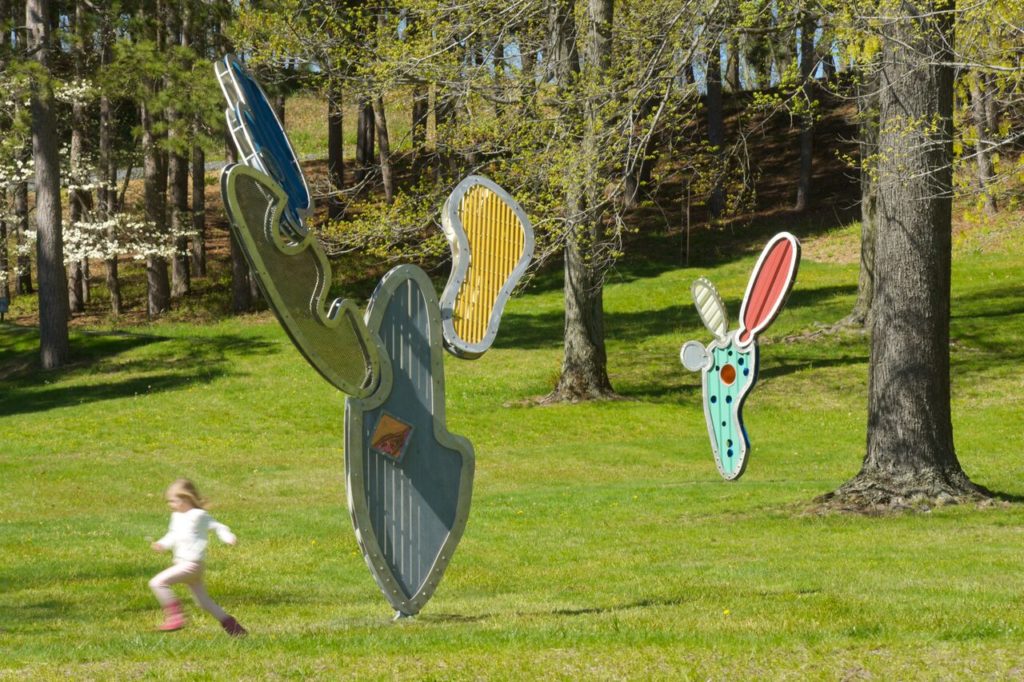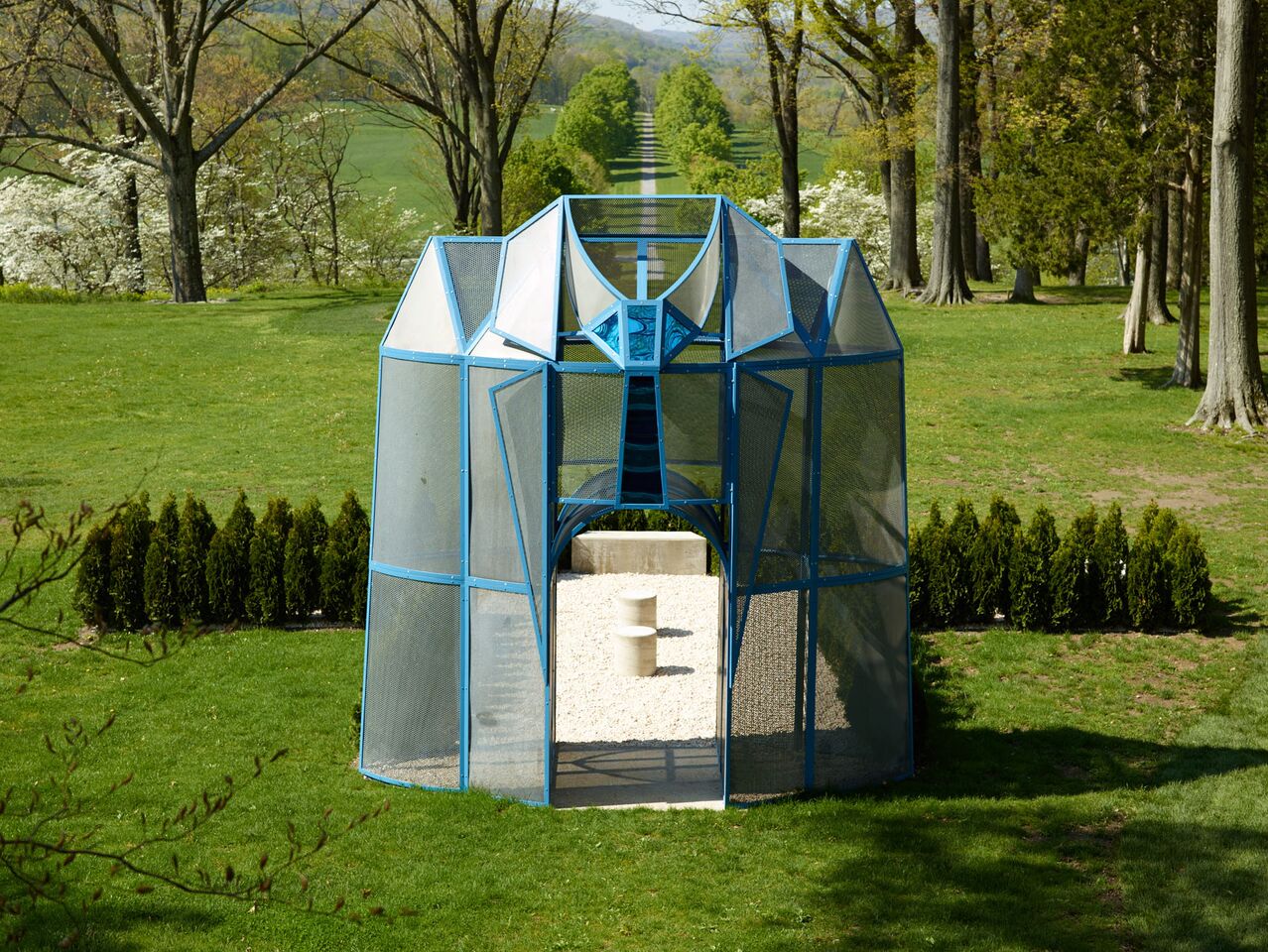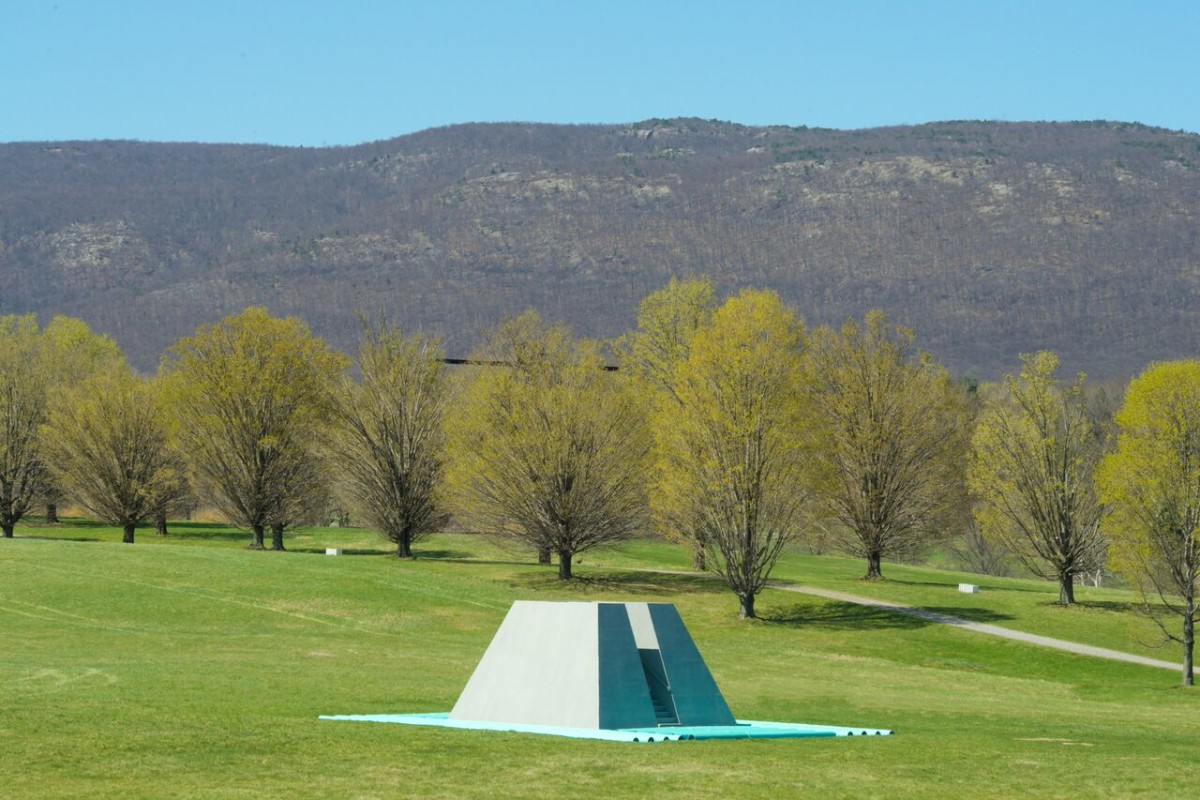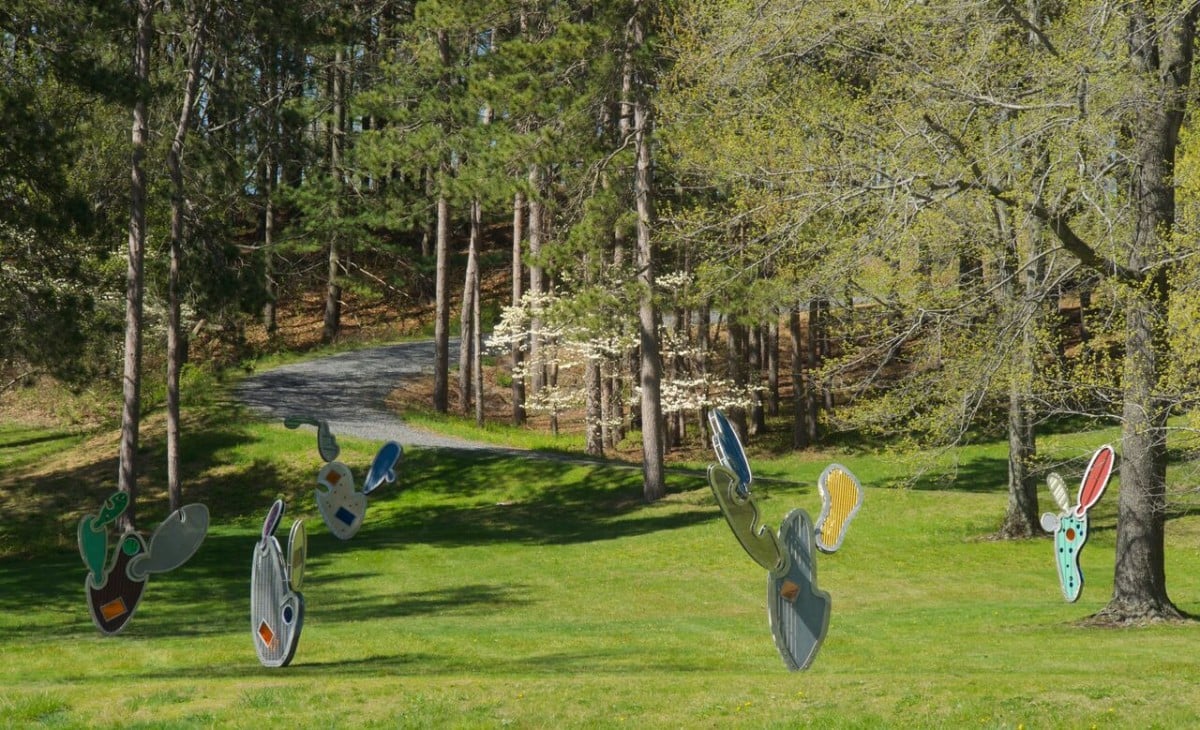Art & Exhibitions
Dennis Oppenheim’s Sculptures Dazzle at Storm King Art Center
The works on view span a 45-year career from a leader in land art.

The works on view span a 45-year career from a leader in land art.

It was time travel by golf cart. The occasion was a press preview at Storm King Art Center in New Windsor, New York, for the opening of a show of work by the late Dennis Oppenheim, titled, “Terrestial Studio,” and we were being driven around the sculpture park. The clutch of Mark di Suvero sculptures loomed ahead of us. It turned out it was those di Suveros. I had written about di Suvero’s installation of precisely those pieces for New York magazine in 1975, one of my first art world features since I had arrived in Manhattan.
It was about then, too, that I met Oppenheim, and we became fast friends. He died in 2011, so this show was doubly time travel, and on Saturday I returned to Storm King with a group that included his family, several people close to him, and his widow, Amy Plumb Oppenheim. It was Amy who helped put this show together, a project which began early last year when Storm King, who had acquired a piece from his group, Cactus Grove, contacted her to advise on the installation. Cactus Grove is six separate pieces, but the artist had always wanted them to be shown together, so she loaned the remaining five.
In August, Plumb Oppenheim was contacted by two of the powers that be at the sculpture park, curator Nora Lawrence, and director and chief curator David Collens. The end result is an ambitious show consisting of art, photography, diagrams and meticulous documentation in six indoors galleries as well as sculptures on seven outdoor sites. The name of the show was lifted from the interview in which Dennis Oppenheim describes the land on which he worked as his “terrestial studio.”

Dennis Oppenheim at Storm King. Courtesy of Dennis Oppenheim Estate.
The outside pieces include Wishing the Mountains Madness, a fairly distant descendant of Star Skid, which caused controversy in 1978 when it emerged that it might be going to the new Museum Of Contemporary Art in Tehran. Well, times have changed. Another work, The Shirt Factory, clearly descends from Blue Shirt, a commission for Mitchell International Airport in Milwaukee, which was quashed by local pols, thin-skinned about any suggestion that theirs was a blue-collar culture. But an art world without controversy would be a very boring place.
One of the more remarkable pieces, I think, is the earliest work in the show, a truncated pyramid, which Oppenheim originally planned in 1967 and showed in a Belgian gallery as Structure for viewing a gallery space but which he soon re-thought for a landscape, one of several structures intended not be looked at but looked out from, pure celebrations of the natural world.
“He had this in mind before he met with Robert Smithson and the Land artists,” Plumb Oppenheim says.”He had this in mind when he was still in Hawaii.” He re-named it Dead Furrow. And this is the structure—a viewing platform which Oppenheim decided should be 10 feet high and have a mile of clear space in every direction—that has now been brought into being at Storm King.

Dennis Oppenheim, Dead Furrow (1967/2016). Courtesy of Dennis Oppenheim. Photo: Jerry L. Thompson
The three Oppenheim children, Erik, Kristin and Chandra, were all present at the opening. All had made work with their father as children. “I’m going to go back,” said Chandra, a musician. “I wanted to literally go into The Kiss. And spend some time in the Cactus Grove…And I love seeing the Blue Shirt piece because any time there is controversy with any of his pieces I’m always happy to see them up.”
And Dead Furrow?
“Yes, that too. That was a strange experience, something on paper coming to life after his death. That was a piece he made before I was born, too. And my mother mentioned it was the first piece of his she ever saw. Of course, on paper.”
Les Levine, the artist, most liked Dead Furrow. “Most sculpture is heavier than you. With this you can engage with it, you can go to the top of it. I think that’s a step forwards.”
Paris Murray Celant, who had worked with Oppenheim for 25 years, and whose husband, Germano, is the curator of the Fondazione Prada, had flown in from Milan for the event. And she brought up rather an interesting point, arising from final birthing of Dead Furrow. Most of the major land artists had or have a drawer full of unachieved projects. “Now there is the prospect of getting the undone projects done. And properly done,” Celant said. “This is what matters. What can be built, and rebuilt. It isn’t a precious object, it’s a precious idea.”
How many more of the artist’s unused ideas are there?
“Maybe 20 or 30,” Plumb Oppenheim guesses. “It’s hard to say. But it’s safe to say that there are projects I would like to see done.”

Dennis Oppenheim, Architectural Cactus Grove, #1–6 (2008). Courtesy of Dennis Oppenheim Estate.
Dennis Oppenheim: Terrestrial Studio is on view from May 14 through November 13, 2016 at Storm King Art Center.